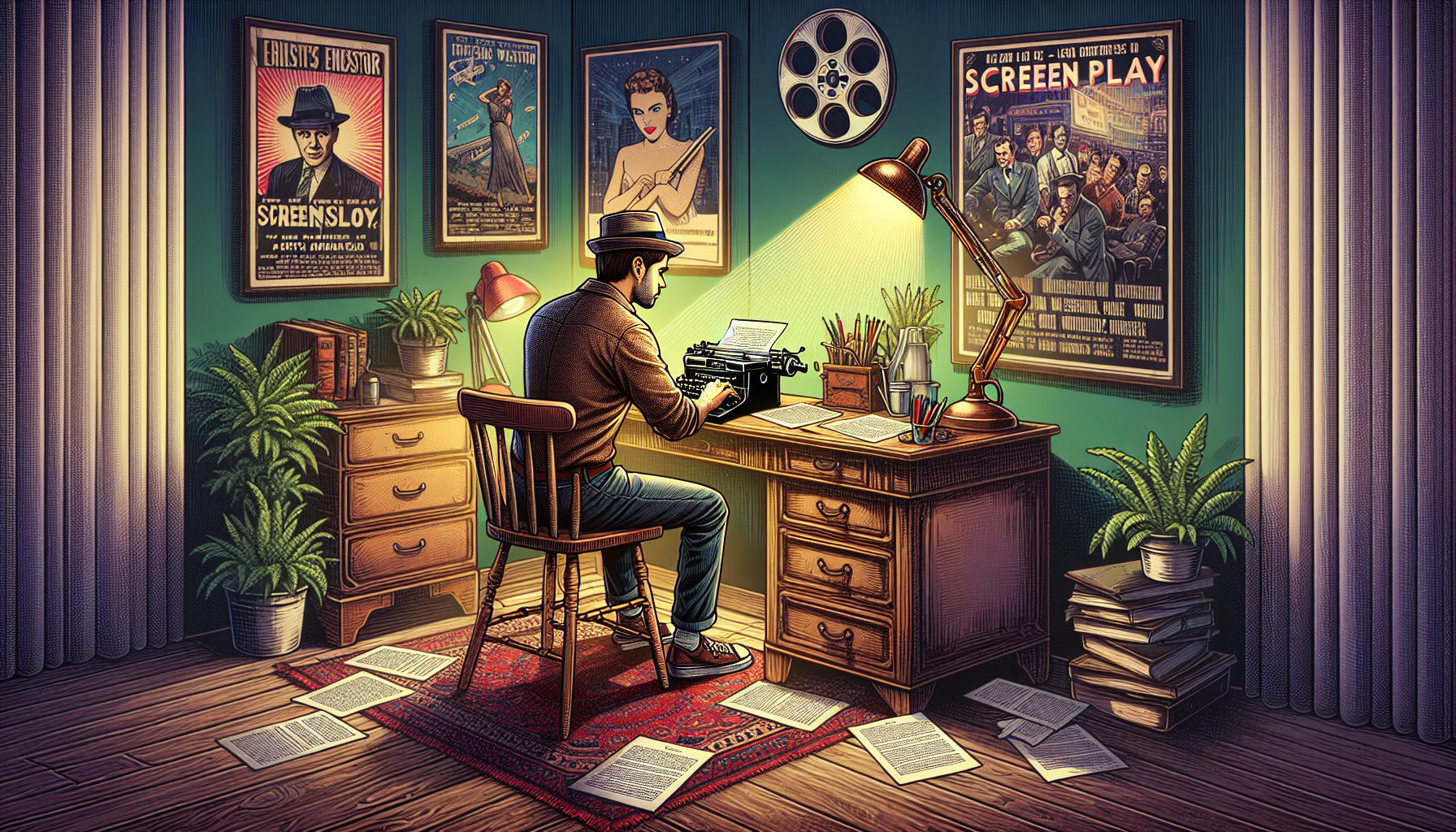
Welcome to the Mad, Bad World of Screenwriting: A Beginner’s Guide
So, you want to jump into the tempestuous ocean of screenwriting, huh? Ready to transform caffeine and your wildest dreams into cinematic gold? Excellent! Screenwriting is not for the faint hearted. It’s for the brave, the persistent, and the slightly mad. But fret not, aspiring scribe, for we are here to guide you through this labyrinth with a torch aflame with wisdom (and a little bit of snark). Buckle up, grab your favorite writing snack, and let’s dive into the basics of screenwriting for beginners.
The Almighty Structure
Imagine a world where chaos reigns supreme. No order, no logic, just a free-for-all mess. Terrifying, isn’t it? Well, that’s a world without structure, and it’s a screenwriter’s worst nightmare. The backbone of any good script is its structure, typically the classic three-act structure: Act 1, the Setup; Act 2, the Confrontation; and Act 3, the Resolution. Each act serves its own purpose, guiding the audience through the emotional rollercoaster you’ve crafted with the precision of a Swiss watchmaker on a caffeine binge.
Characters That Leap Off the Page (And Into Hearts)
Characters are the heart and soul of your screenplay. These little fictional beings you conjure up need to be so real, so palpable, that readers forget they’re essentially staring at glorified hieroglyphics on a page. Give them flaws, dreams, a weird obsession with collecting antique spoons—whatever makes them tick. Remember, your characters should be as complex and unpredictable as your Aunt Edna at the family reunion after she’s had a few too many.
The Hero’s Journey (Or Why Your Protagonist Should Suffer)
Every hero needs a journey. Preferably, one filled with enough conflict to make their eventual victory satisfying. This isn’t a leisurely stroll through the park. It’s a crawl across a desert of broken glass and lost dreams, all for the sake of character development. The more your protagonist struggles and evolves, the more engaging your story will be. Think of it as a cinematic boot camp for your lead character. No pain, no gain.
Dialogue: Less Is More (But Make It Sparkle)
Dialogue in screenplays is like the spice in your grandma’s secret recipe. Too little, and it’s bland. Too much, and it’s overwhelming. The key is to find the right balance and to make every word count. Good dialogue reveals character and advances the plot, all while sounding as natural as the awkward silences at a high school reunion. The goal? Write dialogue so good that actors will fight to deliver it—and fight even harder to nail it.
The Devil’s in the Details (But Don’t Get Lost in Them)
Writing a screenplay is not unlike painting a masterpiece. You need to know when to add the intricate strokes that make your story come alive and when to step back and let the audience fill in the blanks. Descriptions should be vivid yet concise because, remember, you’re not writing the next War and Peace. You’re setting the stage for directors, actors, and cinematographers to bring your vision to life. Trust in the power of collaboration, and leave room for movie magic to happen.
The Pain and Pleasure of Rewriting
Here’s a truth bomb: your first draft will be terrible. Accept it. Embrace it. Then get ready to rewrite it until it’s not. Rewriting is where the real magic happens. It’s a painful process of killing your darlings (yes, even that scene you love) and resurrecting them into something even better. Think of yourself as a literary Phoenix, rising from the ashes of crumpled paper and deleted files.
Embarking on a screenwriting journey is not for the weak of spirit. It requires resilience, creativity, and an unyielding passion for storytelling. But fear not, brave soul. With these basics in hand, you’re well on your way to crafting spellbinding scripts that will captivate audiences and maybe, just maybe, kickstart a glorious screenwriting adventure. Now, go forth and write. The world’s next great screenplay awaits within you!






